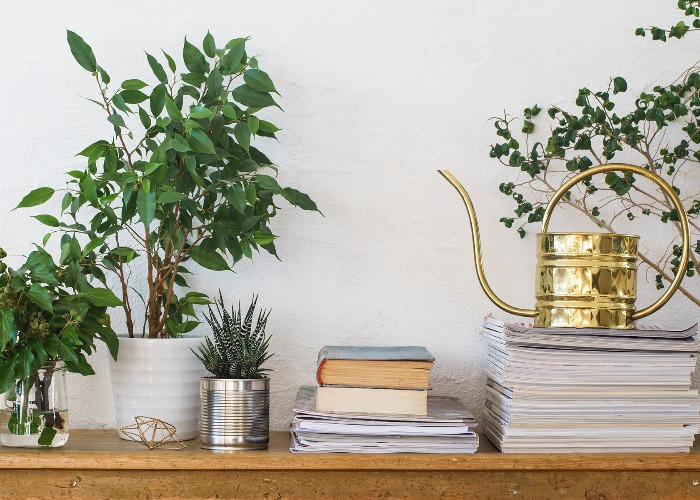Beginner's guide to watering indoor plants

Follow the seven golden rules of watering and your indoor house plants are sure to thrive
While some people seem to have a knack for growing healthy house plants, for the rest of us keeping a cactus alive can feel like a bit of a stretch. If the latter sounds like you, help is now at hand in the form of the brilliant new RHS Practical House Plant Book (£14.99). It's a bible for anyone who wants to know how to look after their indoor plants and create unique displays that will bring year-round cheer to your home.
READ MORE: Just moved? Top tips for your new garden
Authors Fran Bailey and Zia Allaway shared their top tips with us on one of the most important aspects of indoor gardening - how to water your house plants. These days you can buy indoor plant watering systems that take the guesswork out of it, but if you still enjoy picking up a watering can and tending to your greenery, then read on.
When to water plants
Most house plants prefer moist compost in spring and summer when they are in growth, but take care not to water too much; soggy, waterlogged compost causes disease and can be fatal, while a little drought is easily remedied.
To prevent wet compost, keep your plants in pots with drainage holes at the bottom so that any excess water can drain out, and tip away any surplus that is sitting in the plant’s decorative pot (“sleeve”) or saucer about an hour after watering.

How to water
Watering from above: Pour water from above if your plant is happy for its foliage to be doused; most tropical plants and ferns are in this category. Make sure that the compost is also soaked or you risk watering the leaves without any moisture reaching the roots.
Watering from below: Set your plant in a pot with drainage holes in a tray of water about 2cm (3⁄4in) deep. Leave for 20 minutes, then remove and drain. Use this method for plants that do not like wet leaves or stems, such as African violets, or if foliage is covering the compost.
 African violets bloom throughout the year
African violets bloom throughout the year
Misting leaves and aerial roots: Some plants absorb moisture through their leaves and aerial roots. Examples include orchids, Swiss cheese plants and areca palms. Mist the leaves and roots regularly, but also water the compost to keep them healthy.
Watering bromeliads: The leaves and bracts (petal-like modified leaves) of most bromeliads - such as silver vase plant and Amazonia Zebra Plant - form a cup-like reservoir in the centre of the plant. Fill this up with rainwater or distilled water, replenishing it every few weeks. Also water the compost so that it is moist.
 Bromeliads are easy to care for. After blooming the plants produce baby offsets which grow into new plants
Bromeliads are easy to care for. After blooming the plants produce baby offsets which grow into new plants
Soaking air plants: Air plants are best soaked in a tray of rainwater or distilled water for an hour once a week. After soaking, leave to drain, and make sure they dry fully within 4 hours to prevent them rotting. Alternatively, mist them 2–3 times a week.
 Water air plants in a tray
Water air plants in a tray
Stop the rot
Drought-loving cacti and succulents like their leaves and stems to remain dry at all times, so add a layer of grit (known as a “mulch”) on top of the compost if repotting. Mulch helps water to quickly drain away, preventing them from rotting.
 Even cacti need love and attention
Even cacti need love and attention
The seven golden rules of watering
1. Keep plants in pots with drainage holes to prevent waterlogging.
2. Water most plants every 2–4 days (or as required) in spring and summer to keep the compost, moist (not waterlogged).
3. Water desert cacti and succulents less frequently (only when the top of the compost feels dry).
4. Reduce frequency of watering in winter when plant growth is slower and temperatures are lower.
5. Tip out excess water from pot sleeves and saucers to prevent overly soggy compost.
6. Avoid getting water on the leaves and stems of plants with soft, furry foliage, or succulents and cacti.
7. Do check to see if your plant prefers rainwater or distilled water rather than straight from the tap.
Got the gardening bug? See these gorgeous ideas for small gardens or try these easy gardening hacks to take the graft out of growing.
Comments
Be the first to comment
Do you want to comment on this article? You need to be signed in for this feature